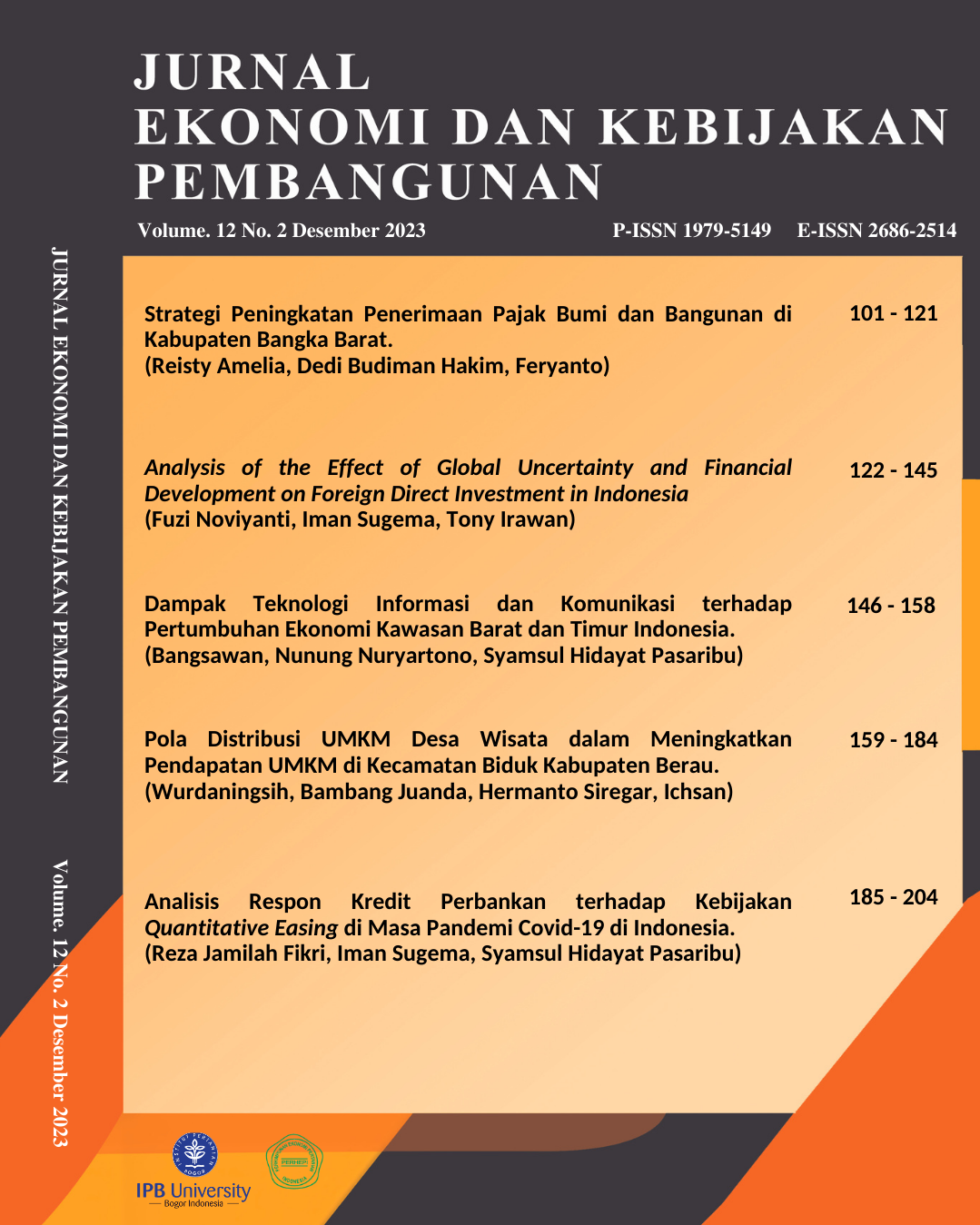Analysis of Banking Credit Response to Quantitative Easing Policy during the Covid-19 Pandemic in Indonesia IPB University
Abstract
The purpose of this study is to identify the response of banking credit/financing and to analyze which bank
characteristic variables have caused and had the potential to differentiate in banking credit/financing
responses after the implementation of the quantitative easing policy during the Covid-19 pandemi in
Indonesia. This study uses the Klaassen Typology, Discriminant Analysis, and Multinomial Logistics
methods. With quantitative data from 30 banks included in books 2 and 3, the results show that In quantitative easing 1, there are 15 banks respectively that have positive credit/financing growth, while in quantitative easing 2 there are 14 banks that have positive credit/financing growth and 16 banks with stagnant or negative credit/financing growth with variable that can distinguishes the bank's credit response is deposit growth. The study also concluded that with the Multinomial Logistic method show that a significant positive variable in all quadrants is the security asset to total assets ratio.
Authors

This work is licensed under a Creative Commons Attribution-NonCommercial 4.0 International License.
The authors who publis article(s) in Jurnal Ekonomi and Kebijakan Pembangunan have to understand and agree that the copyright of article published is owned by Jurnal ekonomi and Kebijakan pembangunan including to reproduce, distribute and sell this journal to public.





